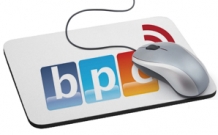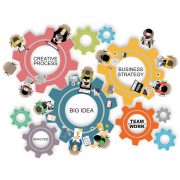How to Build a Printing Strategy in Under 30 Minutes
Although more and more things are going digital, print is not dead. Any marketing department worth their salt would tell you that you need a good mix of traditional and digital marketing tactics to meet customers where they are and therefore, still require you build a printing strategy. In fact, according to research, the response rate for direct-mail pieces is 37% higher than email, so it’s important to include all forms of media in your marketing plans.
Fall is the traditional planning season for most marketing departments. With planning comes budgets, whether it’s ad spend, agency costs or other expenses, like printing.
Here are 7 things you should think about when you build a printing strategy (to keep with our year of 30 theme, we said in under 30 minutes, but, really, don’t skimp on this step).
- Know your audience. Before you engage your print vendor, take the time to understand your audience, know their behaviors as well as their preferences. Do they respond better to custom promotional items? Or is a well-executed brochure better received? Responding to your customer’s needs makes you more relevant and builds trust.
- Plan in advance. Traditionally, you end up paying more for your project when it’s rushed. While quality printing companies can meet strict deadlines, a good rule of thumb is to give printers at least 10 business days to complete a project.
- Schedule ahead. Adding onto the tip above, find a vendor you plan to work with for the foreseeable future. Your processes can only improve the more you work with them. They get to know your business, your internal structure, your approval process and can identify and solve potential roadblocks before they happen.
- Print more than you think you need. It’s always cheaper to print more than you think you need, especially if it’s a branded piece you can use again over time. The bulk of your printing cost is in the set-up. The more you print at one time, the less expensive each piece is, the more money you can save in the long run.
- Be consistent. Unless you’re printing a specialty piece, you should keep your print specifications (i.e. paper stock, finish, etc.) consistent as well as in the same print family. Just as you’d have your colors consistent with your brand, your print pieces should be consistent, too.
- Use the right printing technology for the right project. If you know you’re going to be printing lower quantity items, use a digital printer instead of an offset printer. Don’t spend a lot on things that can get damaged in transit (i.e. postcards). Save that money for items such as business cards, tri-fold brochures, special occasion pieces or items that are hand delivered.
- Engage your print partner early. Utilize your printer’s expertise. They can help you with your large-scale printing strategies, specific to the objective, assist with scheduling and help you gain efficiencies. They can even help with your mailing strategies when you’re ready to send.
Build a printing strategy, because when done correctly, it can lead to better customer relationships, improved audience reach and increased return on investment. Need help putting together your print strategy? We can help! Contact us to see how printing can help enhance your next marketing campaign.



